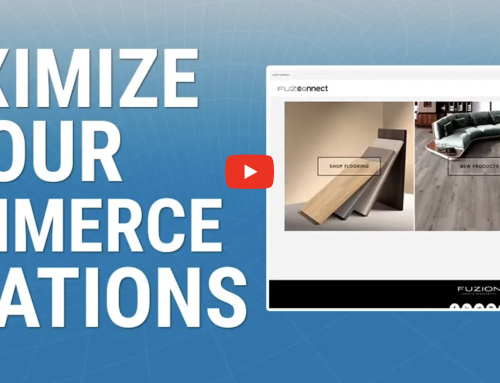Trends and Insights within B2B Ecommerce
Lindsay Wickham
Ecommerce transactions are increasing in volume and have nearly doubled within the B2B landscape over the past decade. According to Statista, B2B online sales in the U.S. are projected to reach 1.8 trillion dollars in 2023.
Considerations like pricing tiers, loyalty/rewards programs, and real-time inventory counts are important to B2B companies. B2B companies are looking to simplify orders, increase accuracy, improve bulk order processing, empower employees with a self-service tool, place orders anytime/anywhere, and accelerate online sales. As the popularity of mobile shopping continues to rise, companies need their mobile viewing and checkout processes to work seamlessly (and on a handheld screen). Luckily, a shift to digital has created opportunities for automation and analytics that can support those types of critical operations.
Digital tools for sales and reporting help companies to improve their end-to-end customer journey while allowing for new opportunities and efficiency within the sales order process. Many small businesses have manual processes for order and reorder entries that sometimes need to be recorded across multiple platforms. Streamlining to digital technology that alleviates manual entries not only saves time for employees, but it is also more accurate and offers a holistic view of pricing, order histories, and other essential metrics.
As COVID-19 limited the ability to buy things in person while social distancing was at its peak, it also shifted the business world and how companies bought and sold products to one another. The pandemic essentially forced a greater shift for B2B companies to think about how to modernize their sales process. Customer expectations for ecommerce are at an all-time high and companies that embrace a shift to digital can provide better service and information to existing and new business partners.
“The pandemic has cemented omnichannel interactions as the predominant path for B2B sales. Even as in-person engagement reemerged as an option, buyers made clear they prefer a cross-channel mix, choosing in-person, remote, and digital self-serve interactions in equal measure,” according to an article by McKinsey & Company. As B2B companies think about strategy, offering a variety of purchasing channels for customers should be part of the conversation.
Implementing omnichannel sales will become increasingly more important for B2B companies to keep up with the competition, with McKinsey noting how “companies may find that they need to upgrade their infrastructure and tool sets to keep pace, with investments in hardware, software, and marketing outpacing other spend categories.”
After an initial investment is made to improve infrastructure, companies will have benefits like automation (reducing manual entry time) and the ability to streamline the sales order, invoicing, and payment process via online systems that do the heavy lifting. Finding the right digital products that can connect your back-end data to your front-end customer experience is a great way to begin the process.
Brought to you by the B2B and B2c e-commerce implementation team at FocusPoint: an all-in-one solution for SAP Business One customers.






